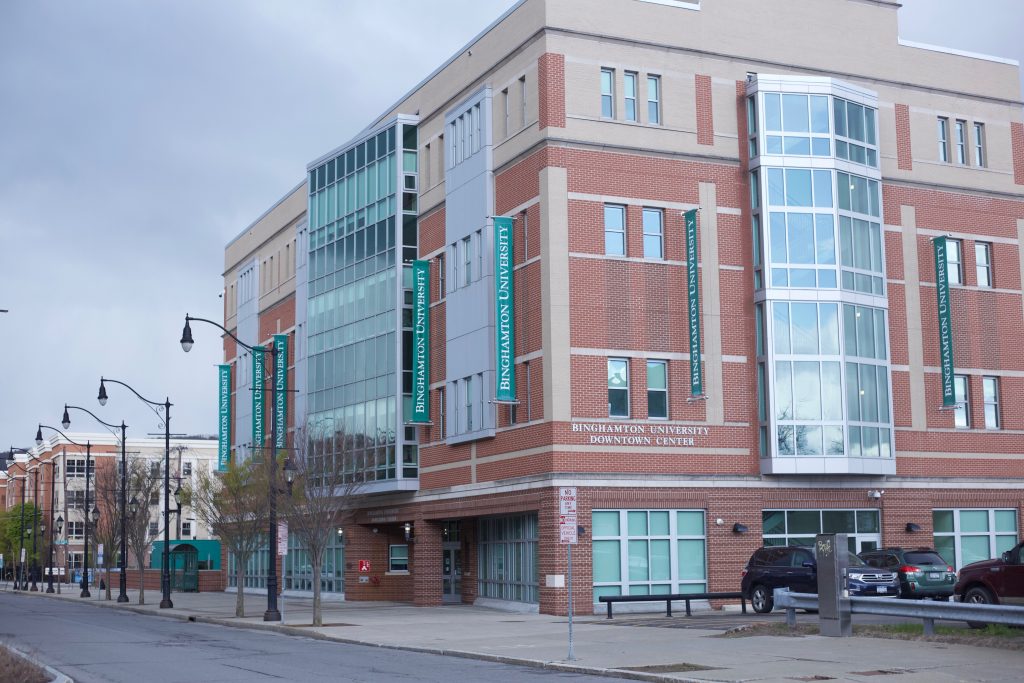The University Downtown Center (UDC) may soon be home to a statue of Harriet Tubman.
Nearly two weeks ago, New York State Gov. Kathy Hochul stopped by Johnson City, pledging $400,000 toward Binghamton University’s Freedom Trail Project. The project’s aims are twofold — to erect a statue of the famous abolitionist at the UDC and to place 12 historical markers denoting underground railroad stops and other sites around Binghamton.
BU’s Harriet Tubman Center for the Study of Freedom and Equity was founded in 2019, with the goal of advancing equity on campus. That same year, the center held a Truth and Reconciliation Commission, seeking solutions to problems of racism and diversity.
The Freedom Trail Project resulted from conversations within the commission, according to Anne Bailey, director of the Tubman Center and a professor of history at BU.
“Some who testified say they wanted to see more representation on our campus and in the greater community of the ideals we aspire to — freedom and equity,” Bailey wrote in an email. “So one answer was to erect a statue to Harriet Tubman, because who better than Tubman could remind us and inspire us each day to complete her unfinished work?”
As of currently, five artists are in consideration for designing the statue — all of which are expected to present their models in the UDC on April 20.
The Tubman Center will begin placing the historical markers earlier — on March 10, or Harriet Tubman Day. According to Bailey, these will include “Underground Railroad stops, anti-slavery sites and other sites representing the advancement of civil rights.”
Bailey said the Tubman Center hopes for the project to be engaging, particularly through incorporating programming for local K-12 students that will be among those touring.
“At the same time, we did not want to just erect a statue and historical markers that were static,” Bailey wrote. “We wanted from the start to have a very interactive component which we are working on now. That is where our students and the students in our public schools come in.”
The tour will begin with the statue of Harriet Tubman and end at the statue of Martin Luther King Jr. at the Susquehanna River. According to Bailey, this represents the project’s theme of “passing the baton” from Tubman to King to others.
Javonne Thomas, a junior majoring in biology, said he was excited to hear of the project, describing it as a welcome change from statues that depict problematic historical figures.
“To have a statue of someone that represents something more positive is very beneficial,” Thomas said. “For a community that’s usually underrepresented — like Black people — I feel like it’s very important for them. And also it is history — history isn’t just white history.”
Christian Bouie, a freshman with an individualized major in journalism, shared Thomas’ sentiment.
“I think it’s good to bring exposure to the Black community,” Bouie said. “We already go to a predominantly white institution, and we don’t as itself get a lot of recognition. So I think it’s good for the town and to just bring more acknowledgment to just us as a whole, in general.”
During Hochul’s Feb. 22 visit, she also promised $10 million to the Village of Johnson City as a part of her Downtown Revitalization Initiative. As staff at the Tubman Center prepare for the project ahead, Bailey said she is glad to have the governor’s support.
“We were still, however, in the throes of seeking more support so this announcement was a great boost,” Bailey wrote. “It was also great to meet the governor and to hear more about the great initiatives coming to our area, including further revitalization of Johnson City.”
Editor’s note (3/8/23): A previous version of this article stated that the Tubman Center was founded in 2021. The center was founded in 2019. The article has been corrected.



